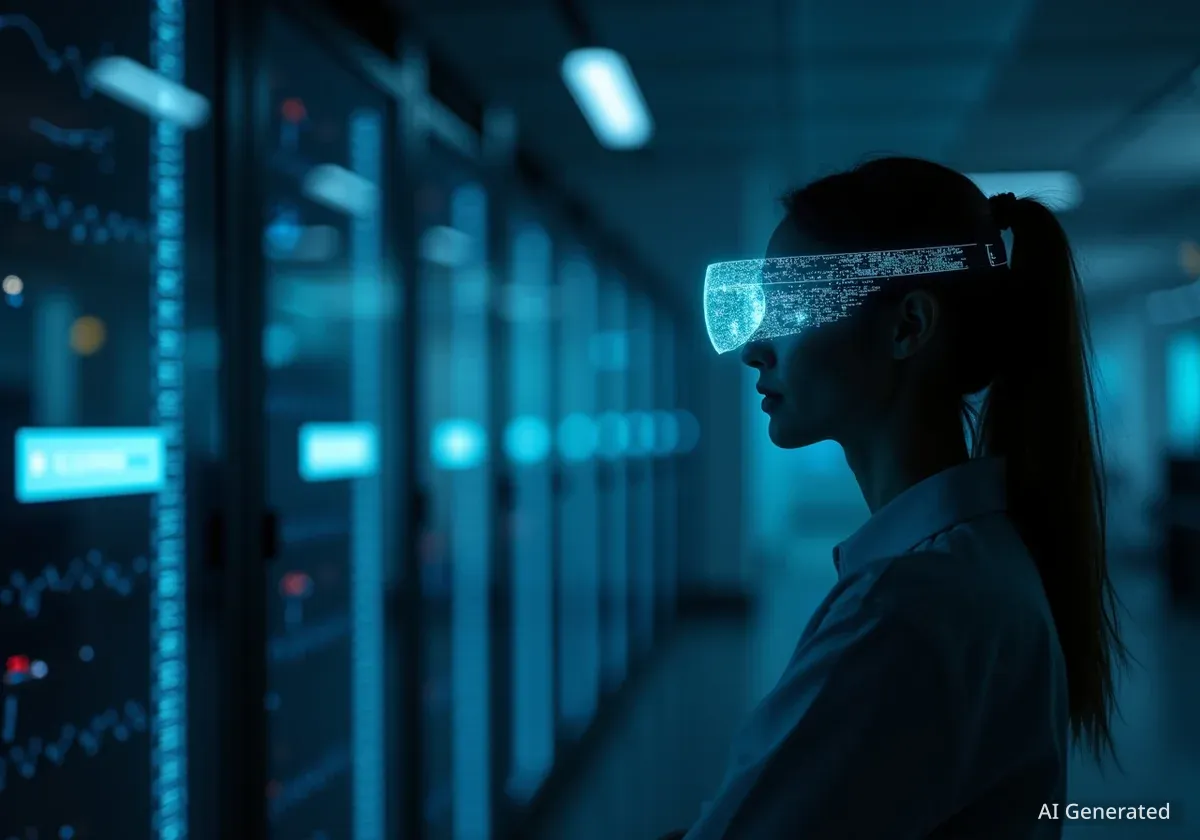The market for immersive technologies, known as Extended Reality (XR), is experiencing rapid growth, with Meta solidifying its leadership position. According to the International Data Corporation (IDC), Meta captured a commanding 60.6% of the market in the second quarter of 2025, driven by the popularity of its smart glasses and virtual reality headsets.
This market dominance is prompting competitors to adjust their strategies. Apple is reportedly pausing development on a new version of its high-end Vision Pro headset to prioritize a more accessible, AI-powered smart glasses project, signaling a significant shift in the race for the next generation of wearable technology.
Key Takeaways
- Meta holds over 60% of the XR market share as of Q2 2025, according to IDC data.
- The global XR market is projected to grow from $37.94 billion in 2025 to $84.86 billion by 2029.
- Apple is reportedly shifting focus from its expensive Vision Pro headset to developing more affordable AI-integrated smart glasses.
- Meta's CEO, Mark Zuckerberg, positions smart glasses as the ideal device for personal AI assistants.
The Expanding Universe of Extended Reality
Extended Reality, or XR, is a broad term for technologies that merge the real and virtual worlds. The concept, first named in 1991 by Steve Mann and Charles Wyckoff, covers a spectrum of experiences from partially to fully immersive.
This technology is not a single product but a category that includes several distinct types of interaction. Understanding these differences is key to seeing where the market is headed.
Defining the Digital Spectrum
The XR landscape is primarily composed of three core technologies:
- Augmented Reality (AR): This technology overlays digital information, like graphics or text, onto the user's view of the real world. It enhances reality rather than replacing it.
- Virtual Reality (VR): VR creates a completely artificial, computer-generated environment that users can explore. It fully immerses the user, blocking out the physical world.
- Mixed Reality (MR): MR is a more advanced form of AR where digital objects are not just displayed but can also interact with the real world in real-time. Devices like Microsoft's HoloLens are prime examples.
Major Players and Products
The current XR market is shaped by several key products that demonstrate these technologies. Prominent examples include the Meta Quest series (primarily VR), Apple's Vision Pro (MR), Microsoft's HoloLens (MR), and the Magic Leap headset (MR). Each device offers a different approach to blending digital and physical experiences.
Meta's Market Leadership and Strategic Vision
Meta has firmly established itself as the leader in the consumer XR space. Its strategy combines accessible hardware with a growing ecosystem of apps and experiences, a formula that has proven successful.
The company's 60.6% market share in mid-2025 highlights the success of products like the Meta Quest headsets and the second-generation Meta Ray-Ban smart glasses. This dominance puts significant pressure on competitors.
"Glasses are the ideal form factor for personal superintelligence, because they let you stay present in the moment while giving access to all the AI capabilities that make you smarter," stated Meta CEO Mark Zuckerberg at the recent Meta Connect conference.
Zuckerberg's comments underscore Meta's new focus: integrating artificial intelligence directly into wearable devices. The company's new Meta Ray-Ban Display Glasses are a step in this direction, aiming to make AI a seamless part of daily life. He also noted that the sales growth for these AI glasses is comparable to some of the most successful consumer electronics in history.
Apple's Strategic Pivot Amid Competition
While a technological achievement, Apple's Vision Pro headset, launched in 2024, has faced challenges. Its high price point has made it difficult to compete with more affordable alternatives like the Meta Quest.
In response, Apple is reportedly reallocating resources. The company is said to be halting the development of its next-generation Vision Pro to concentrate on a different product: a lighter, more affordable pair of smart glasses with powerful AI features.
This move suggests Apple recognizes the mass-market potential lies not in high-end, niche headsets but in everyday wearable devices. The focus is shifting from complex mixed reality to practical, AI-driven assistance that is always available.
The Rise of AI-Powered Wearables
AI-integrated smart glasses represent a significant evolution in wearable tech. They offer hands-free capabilities that allow users to interact with the digital world without disengaging from their physical surroundings. Core functions include taking photos, sending messages, getting directions, and translating languages on the fly.
Projected Growth and Industry Adoption
The entire XR industry is on a steep growth path. A report from Markets and Markets forecasts that the market will more than double in just four years, expanding from $37.94 billion in 2025 to an estimated $84.86 billion by 2029.
This explosive growth is no longer solely dependent on the gaming and entertainment sectors, which were early adopters of VR technology. Today, the expansion is fueled by a much broader range of industries.
New Frontiers for XR Technology
XR applications are becoming increasingly common in various professional fields:
- Healthcare: Surgeons use AR for complex procedures, and medical students use VR for training simulations.
- Education: Immersive lessons allow students to take virtual field trips or visualize complex scientific models.
- Manufacturing: Technicians use AR glasses to see repair instructions overlaid on machinery, improving efficiency and reducing errors.
- Retail: Consumers can use AR to see how furniture would look in their home before buying it.
As the hardware becomes more powerful, affordable, and comfortable, the number of practical applications is expected to continue growing, further accelerating market expansion. The strategic shifts by major players like Apple and Meta indicate that the future of XR is likely to be less about escaping reality and more about seamlessly enhancing it with artificial intelligence.





